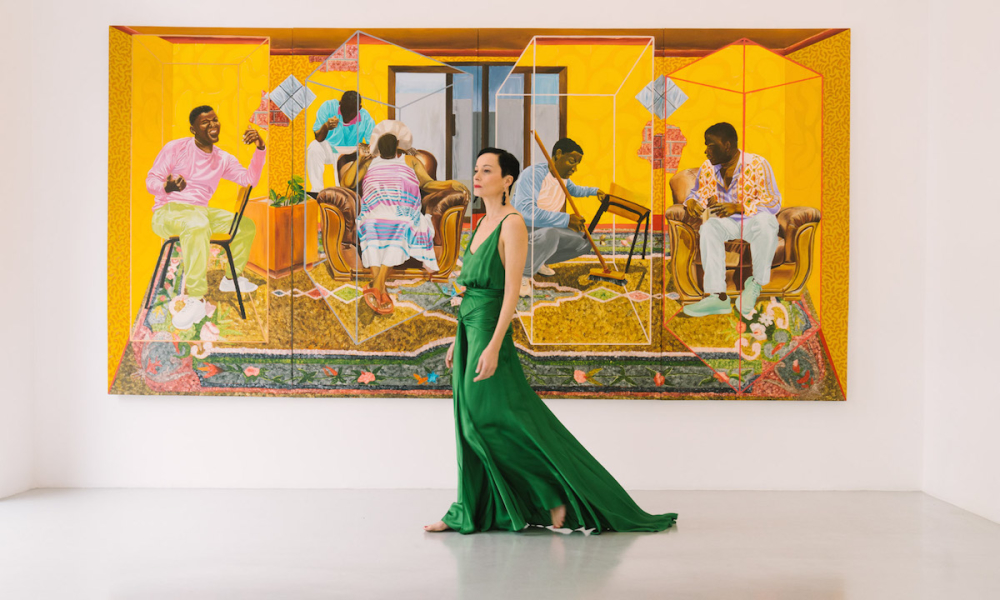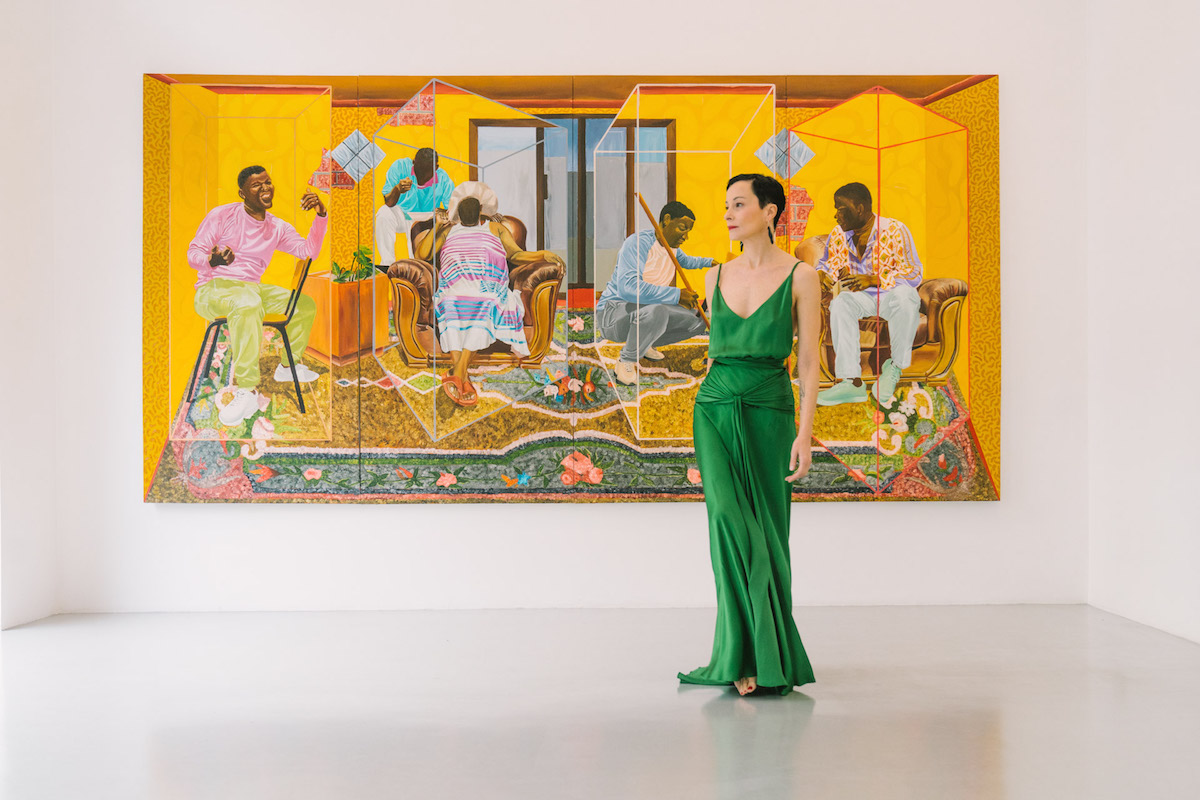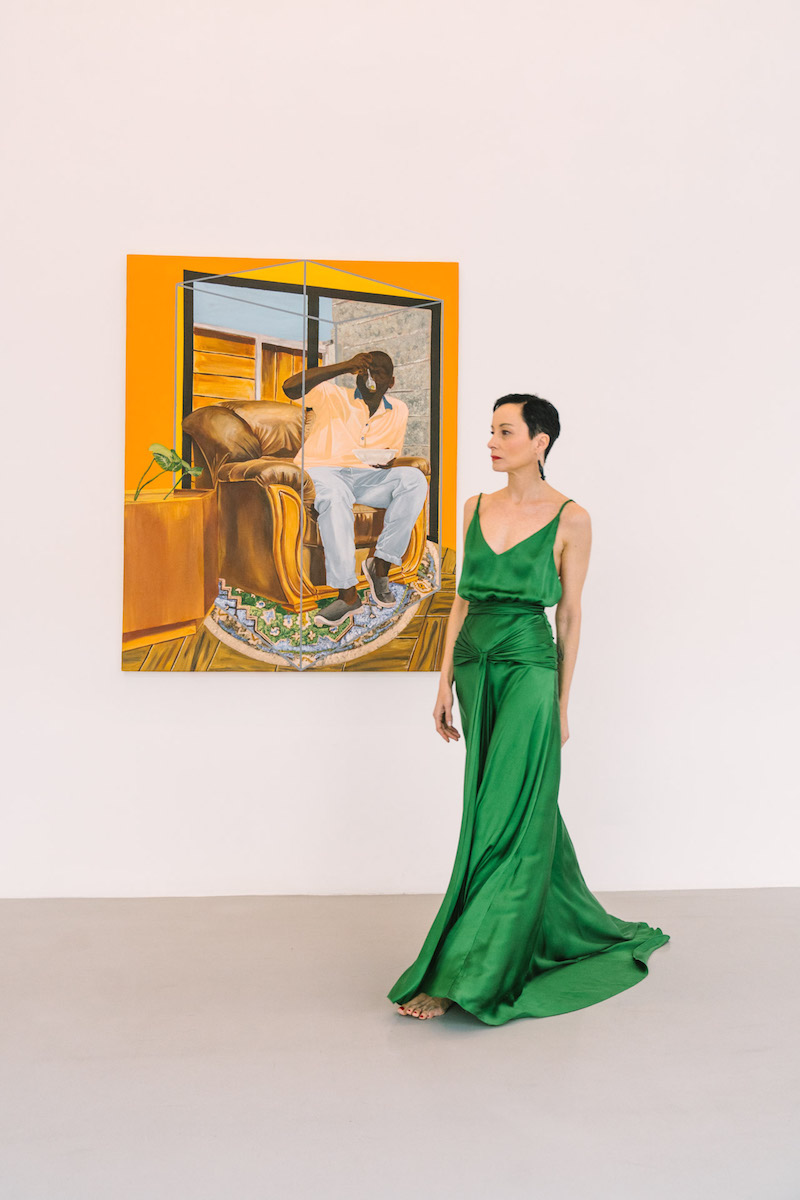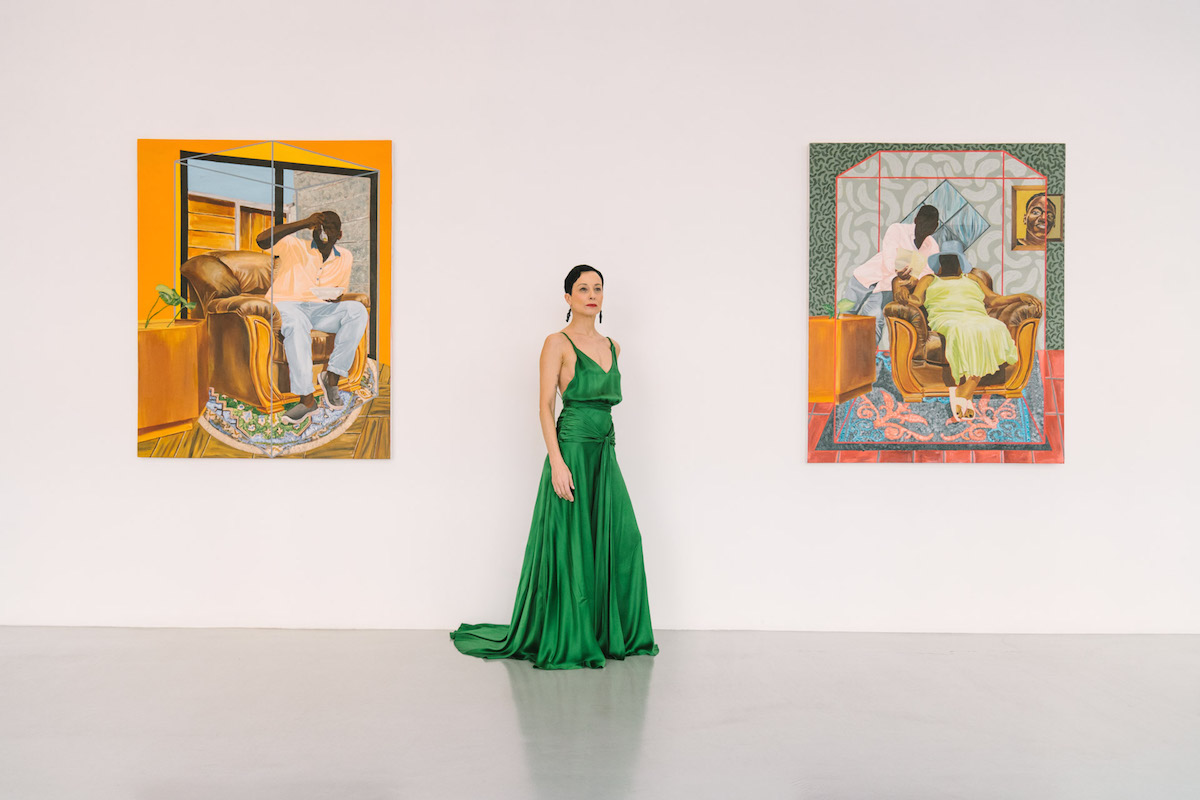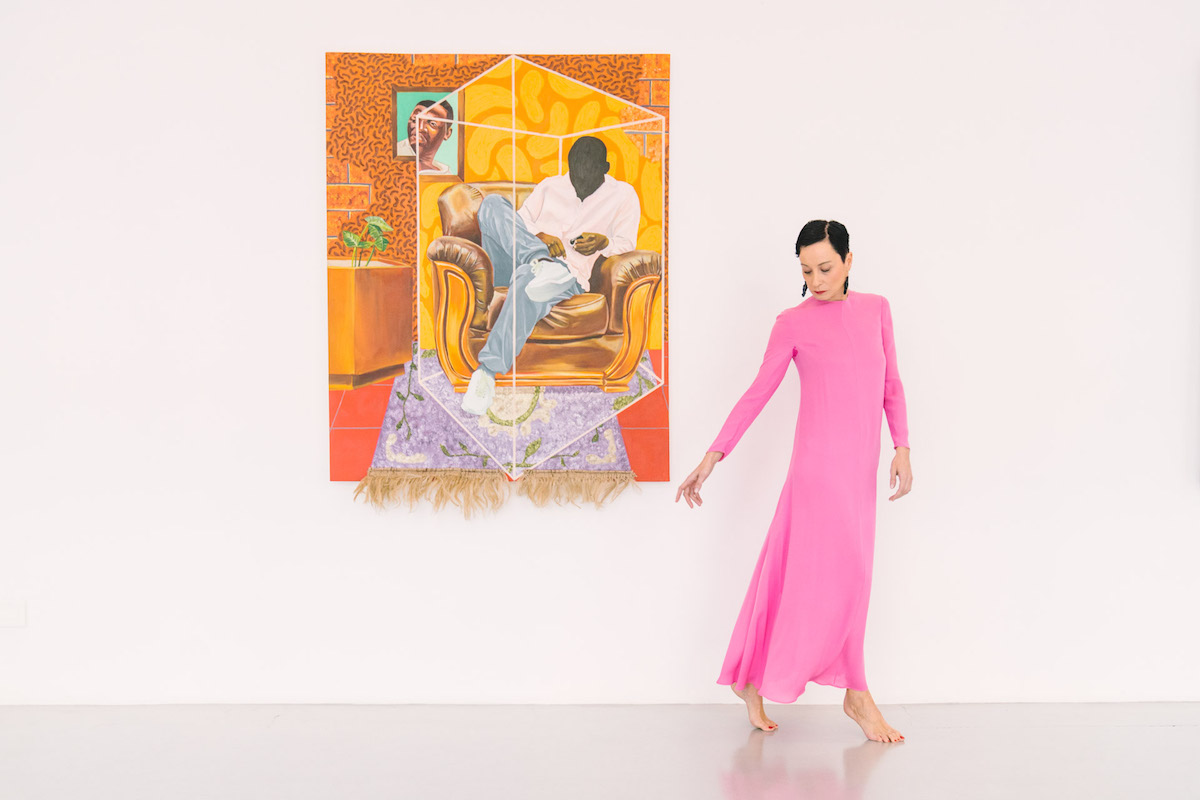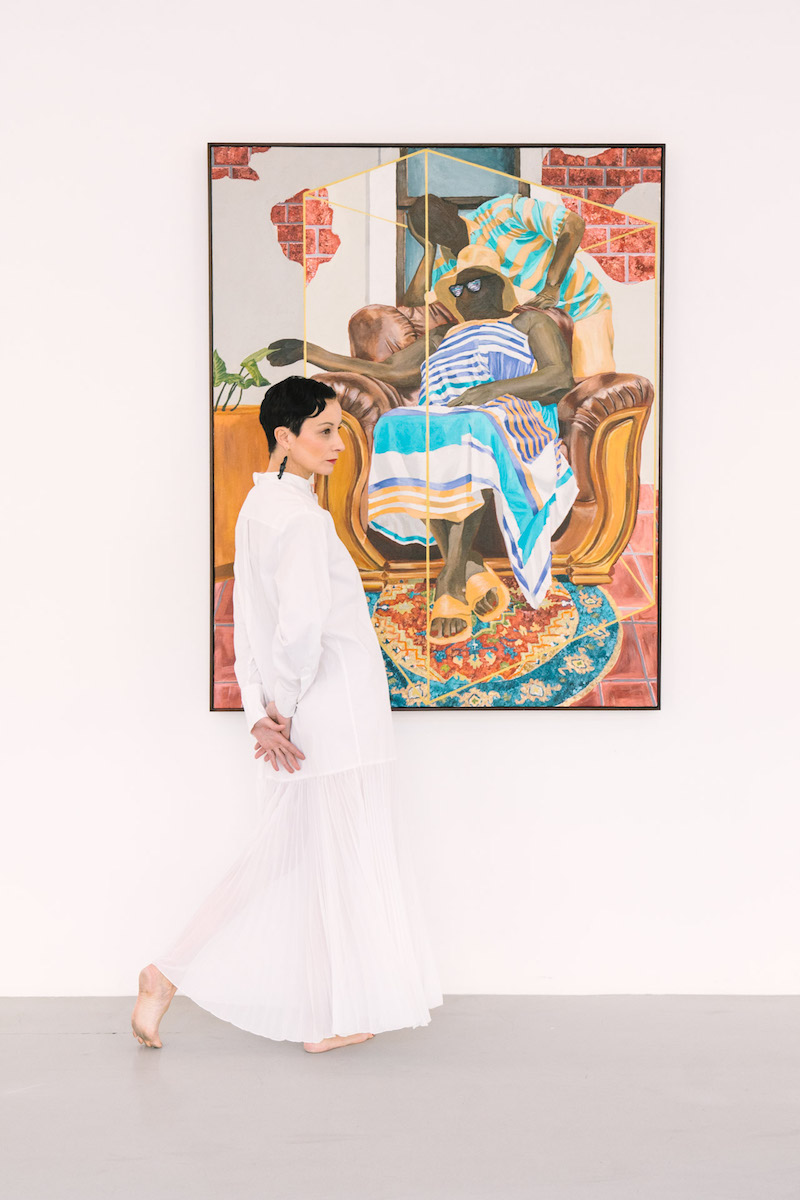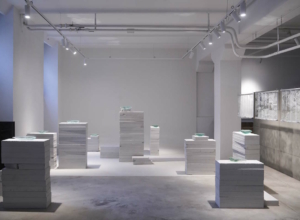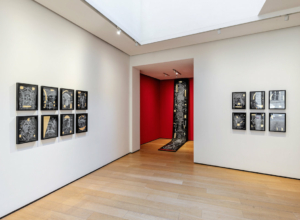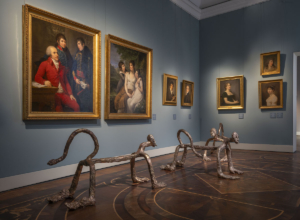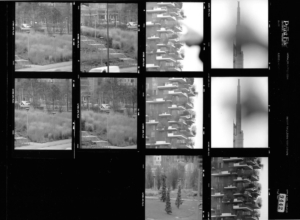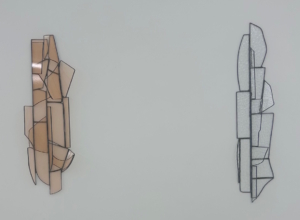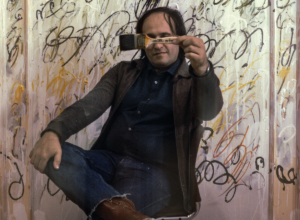Si intitola Behind the Walls, la prima personale italiana che Osart gallery dedica all’artista sudafricano Feni Chulumanco (1994). In mostra un corpus di opere che racchiude i temi portanti della sua ricerca e attraverso il quale il giovane artista autodidatta, ispirato dal proprio percorso personale e di crescita, racconta una storia di orgoglio e isolamento.
Osart Gallery features the exhibition Behind the Walls, the first Italian solo show by South African artist Feni Chulumanco (b. 1994). On display there is a new body of work embracing the young self-taught author’s most iconic themes and values, through which he tells a story of pride and isolation drawing inspiration by his own individual journey and personal growth.
Francesca Interlenghi: Vorrei cominciare dall’inizio e chiederti come ti sei avvicinato alla pittura. So che l’incontro avvenuto nel 2014 con l’artista Ayanda Mabhulu, presso i Greatmore Studios, è stato significativo per te. Cosa è successo in quella occasione?
Feni Chulumanco: La pittura non è mai stata una componente estranea alla mia formazione. Comunismo significava adattarsi, fin dall’infanzia, all’ambiente circostante e alla comunità, stare a contatto con zii che disegnavano o dipingevano, mentre noi bambini giocavamo spensierati. La pittura è stata poi determinante quando mi sono trasferito a Langa (una township di Cape Town ndr) dove ho iniziato a frequentare la scuola. Sebbene venisse impartita un’istruzione tradizionale – le materie linguistiche, matematica e scienze – è stata la mia insegnante d’arte, la signorina Nkunzi che, decolonizzando il concetto di educazione, mi ha introdotto all’arte, alla pittura in particolare, aprendomi una finestra su un mondo altro. Un mondo di Liberazione e Creatività. L’impulso di passare da un piano puramente teorico a uno pratico, si è manifestato quando ho incontrato un grande artista, Ayanda Mabhulu, che mi ha fatto anche da tutor. Sapevo che la mia casa, sempre piena di calore, invitante e affollata, avrebbe favorito un incontro con Mabhulu. E siccome tutti conoscevano il mio amore per l’arte, e per lui in special modo, grazie a un suo cugino che visitava regolarmente casa nostra essendo compagno di scuola di mia sorella, l’ho conosciuto. In seguito, è diventato il mio mentore e ho avuto l’opportunità di condividere con lui lo spazio di lavoro.
Francesca Interlenghi: I would like to start at the beginning. How did you come to painting? I know that in 2014 you met artist Ayanda Mabhulu at Greatmore Studios and that encounter was very meaningful to you. What happened on that occasion?
Feni Chulumanco: Painting is nothing of foreign in my upbringing. Communism meant adapting and living through one’s surroundings, adapting through the community from childhood, encountering uncles who would draw or paint, while as children we played careless. But really it came into an effect in my relocation to Langa (a township in Cape Town, editor’s note) and my schooling. Schools are predominantly structured through mainstream education – your language subjects, maths and science – however my art teacher Miss Nkunzi, decolonised the whole idea of education by introducing art to me – precisely painting. The teacher gave an opening to another world. A world of Liberation and Creativity. The urge then of moving from theory base art (school) to practicality and mentorship would play when I met Ayanda Mabhulu. Quite a remarkable artist. My house was always warm, inviting and crowded, only did I know that would give an opportunity to meet Mabhulu. His cousin regularly visited our home due to being colleges with my sister. Due to everyone knowing my love for art and the artist, the cousin made it a mission to introduce me to Mabhulu which would later provide an opportunity to be mentored and share working space with the artist.
Francesca: Nel corpus di opere che presenti in questa tua prima mostra presso Osart Gallery, il tema dello scenario domestico è preponderante. Non a caso il titolo della mostra “Behind the Walls” fa riferimento al contesto casalingo che per nel tuo lavoro ha una doppia connotazione. Da luogo tradizionalmente deputato all’accoglienza e all’amore si trasforma in rifugio contro i pericoli e le minacce provenienti dall’esterno. Muovi da una vicenda personale per raccontare una vicenda universale, quella del tuo Paese. Me ne più parlare?
Feni: La casa si trasforma in un parco giochi. È il fondamento, l’affermazione di apertura dei miei lavori. Le mie opere sono quasi inesistenti senza la casa, poiché tutto prende forma in essa. Siamo a causa della casa. Alle figure dipinte viene dato il senso dell’espressione, perché esperiscano indisturbate la loro identità personale. Gli occhiali fungono da scudo per la creazione di questa identità. L’isolamento diventa l’elemento che fa esplodere la loro libertà, dà spazio all’individualismo, al riflesso delle proprie emozioni fluttuanti, che si adattano all’ambiente circostante.
Francesca: In the body of works you are showing here at Osart gallery for the first time, the theme of the domestic scenario becomes predominant. Unsurprisingly, the title of the exhibition “Behind the Walls” refers to the home context which, however, has a double connotation in your work. From a place traditionally devoted to acceptance and love, it turns into a shelter against dangers and threats from the outside. You move from a personal story to tell a collective story, that of your country. Could you elaborate a bit on this topic?
Feni: House becomes the playground. It is the foundation. It is the opening statement of my works. My works are almost non-existent without the house, as everything takes form in the household. We are because of the house. The figures have been given sense of expression to deplete their self – identity without any disturbance. The glasses serves as a place of shield to create self identity. I am inviting isolation to boom self freedom and allow individualism and reflection of one’s fluctuating emotions and keeping to surroundings.
Francesca: Molte delle figure umane da te dipinte sono ritratte senza volto. Altre dentro una specie di teca che sembra ingabbiarle. Altre volte ancora sullo sfondo si vede il tuo autoritratto ghignante, appeso al muro delle stanze dove le scene sono ambientate. Qual è la relazione tra tutti questi elementi che caratterizzano il tuo tentativo di indagare il vasto tema dell’identità?
Feni: Perché dietro le mura? Si tratta di un invito, esteso al pubblico, a vedere ciò che spesso non si vede. O, che se visto, spesso viene trascurato. L’utilizzo degli oggetti domestici serve per commemorare l’unione, la famiglia, i ricordi e l’isolamento. Dovrei rendere partecipe lo spettatore di quello che filtra da dietro il muro dell’invisibilità: emozioni, espressioni, ricordi e tutto ciò che viviamo come individui. Ha davvero importanza un muro se riconosciamo la nostra individualità? O il muro può essere abbattuto? Un invito ad andare oltre, al di là di ciò che serve alla nostra infanzia?
Francesca: Many of the human figures you paint are portrayed without face. Others are crystallized inside a sort of display case that seems to encapsulate them. Still other times, we see your grinning self-portrait in the background, hanging on the wall of the rooms where the scenes are set. What is the relationship between all these elements that characterize your attempt to investigate the complex issue of identity?
Feni: Why behind the walls? This is an extention of invite to what is often not seen. If seen but often neglected. With the utilization of household objects to commemorate union, family, memories and isolation. I ought to extend the audience to ooze behind the wall of unseen to the public. Which would serve as emotions, expressions, memories and all that we go through as individuals. Can it really be a wall if we acknowledge our individuality? Or can the wall be broken down? An invite to think beyond what’s there serving our childhoods?
Francesca: L’uso preponderante che fai del colore trasforma la mostra in un viaggio di straordinaria ricchezza visiva. Puoi parlarmi del ruolo che esercita nella tua ricerca?
Feni: Ha a che fare con la casa di mia nonna, che ha un valore affettivo per tutta la famiglia. O comunque, lo ha per me perché ha dato vita alle mie opere e ai miei dipinti. Il trasferimento a casa sua non solo ha un significato che trascende la famiglia, l’unione, i valori, ma è stata una chiamata, per me come artista, a essere creativo e a dare spazio a ciò che spesso ho dovuto sopprimere: la creatività.
Francesca: The massive use of color in your paintings transforms the exhibition into a journey of extraordinary visual richness. Can you tell me more about the role color plays in your research?
Feni: My grandmother’s house, it’s sentimental to the whole family. However it’s sentimental to me because it gave life to my works or paintings. Relocating to my grandmother’s house not only transcended family, union, values but invoked me as an artist to be creative and give life to what’s often have been suppressed: creativity.
____________
Feni Chulumanco, Behind the Walls
dal 27 gennaio al 11 marzo 2023
Osart Gallery | Milano, Corso Plebisciti 12
Foto di Elisabetta Brian


